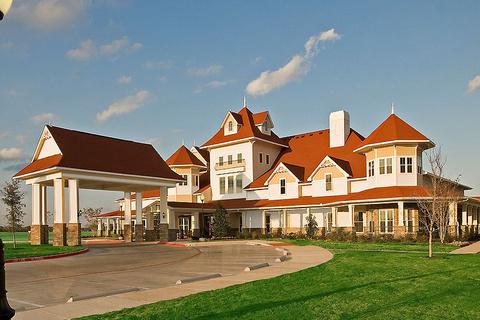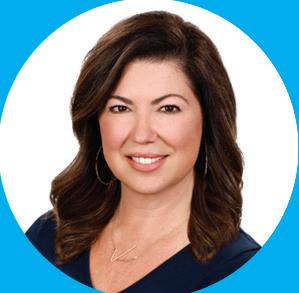Living 50
YEARS

A PRODUCT OF




A PRODUCT OF


Aging. We All do it, And We Are looking for the secret of groWing old grAcefully.
hoW do you stAy young? hoW do you stAy heAlthy?
hoW do i knoW When it’s time to doWnsize?
WhAt cAn i do to ensure finAnciAl stAbility And freedom After retirement? the questions And mAny more Will be AnsWered in this comprehensive living 50 plus edition.


Many people see their careers as one of their defining characteristics. Children are often asked what they want to be when they grow up, and as adults they will likely be asked “What do you do for a living?” more times than they can remember. Work is undoubtedly a major component of life for most people from the time they leave school to the day when they retire. And a growing number of adults value work so much that they pivot to second careers.
A phenomenon known as “unretirement” occurs when people who have previously retired return to the workforce. A 2010 paper published in the Journal of Human Resources found nearly 50 percent of retirees followed a nontraditional retirement path that involved partial retirement or unretirement. According to a recent Retirement Saving & Spending Study from T. Rowe Price, around 20 percent of retirees are working either fullor part-time, while 7 percent of study respondents are looking for employment. Some people return to work for financial reasons while others seek the social and emotional benefits employment can bring. But individuals mulling a return to work or those currently working but trying to determine a second act should not feel beholden to previous career paths. A second trip around the employment block can involve an entirely different line of work. The following are some things to look for in a second act.
• Flexibility: Choose a career path that enables you to set your own schedule or possibly work part-time if that is your preference. This way you can still reap some of the benefits of retirement, including the flexibility to travel.
• Social interaction: Adults may lose daily opportunities to be social when they retire, which can compound feelings of isolation common among retirees. Consider a second career that lets you interact with a number of people and continue to build relationships and a good network.
• Personal passions: Reflect on what you might do for work if money were no object. This may help you narrow down new opportunities that are in line with your interests and passions. Find a job that utilizes your skills and experience and meshes with your interests. A former graphic artist, for example, may decide to teach design to young people.
• Nonprofit opportunities: Many retirees spent years in high-stress corporate environments where bottom lines may be more important than the bigger picture. Shifting to a career in the nonprofit sector can be a personally fulfilling job that utilizes skills learned in the corporate world.
• Consulting or contract work: If you’re a retiree who loved your job, you might want to have a second career as a consultant or contractor in the same field.
A number of retirees ultimately explore second careers. Finding a match may be easier than one could have imagined.





Seniors are a growing and increasingly prosperous demographic. As the senior population increases, a greater emphasis must be placed on keeping aging individuals healthy. Wellness checks are important at any age, but they bear even more significance as individuals grow older.
Age brings with it many things, including experience and wisdom. But age also brings an increased risk for health problems. Aging men and women are vulnerable to chronic conditions like heart disease, COPD, cancer, and arthritis. It’s noteworthy that many chronic health conditions fail to produce any symptoms until they have progressed to a point where treatment is difficult.

Annual wellness exams can help older adults take charge of their health and stay as healthy as possible. It’s possible for a person to preserve his or her health (and possibly life) through check-ups and easy tests. Here are some common screenings and health recommendations that come up in the prime of one’s life.
• Colorectal cancer screening: A colon cancer screening is recommended for everyone at age 45. Colon cancer is the second-leading cause of cancer deaths in the United States, and risk increases at age 45. Although people seldom look forward to a colonoscopy and the required prep, putting off this test due to a little discomfort may result in missing colon cancer at its earliest stage when it is most treatable.
• Cholesterol screening: This simple blood test can help evaluate the risk for heart disease. High cholesterol can contribute to the buildup of plaque in the arteries, making them narrower and less flexible, according to Sharecare, Inc.
• Mammogram: Most health organizations recommend annual mammogram screenings from age 40 until menopause. Then it may be possible to have a mammogram every other year for those who are at average risk. It is important for women to discuss mammogram frequency with their doctors, particularly if there is a family history of breast cancer.
• Diabetes: ChenMed says diabetes may be more common in older adults, so regular screenings for this illness can enable early diagnosis and management.
• Testicular cancer screening: This test generally is not recommended without symptoms. Some organizations suggest men with a family history or other risk factors consider performing self-examinations.
• Vaccination needs: Doctors can alert patients to recommended vaccinations during wellness exams. Seniors should receive an annual flu shot and updated COVID-19 vaccination as available. Pneumococcal vaccine can protect against pneumococcal disease that can lead to pneumonia, meningitis and bloodstream infections. Adults over 50 also should receive a vaccination for shingles, which can occur in older age in those who have previously experienced chickenpox.
There are additional advantages to routine health checkups. Doctors can inquire about fitness routines, stress, sleep, and diet to see if patients are within the guidelines for healthy living. Older age may make a person wiser, but the risk for various health issues and certain diseases increases with age. Routine health check-ups can keep doctors and patients on the same page.
Freedom is often cited as a benefit of retirement. Many professionals look forward to the day when they retire and have more free time and the freedom to spend that time however they choose. Of course, the opportunity to spend retirement how one sees fit typically requires considerable financial freedom.
Financial planning for retirement is often emphasized to young professionals beginning their careers. But it’s equally important that people on the cusp of retirement continue to look for ways to protect and grow their wealth. As retirement draws near, professionals can consider these strategies to ensure they have the financial freedom to make their golden years shine even brighter. • Plan to grow your wealth in retirement. It’s widely assumed that retirees need less income after calling it a career because the need to save for retirement is no longer present. However, some expenses, including health care, may rise in retirement, which underscores the need to continue growing your wealth. Cost-of-living also will increase over the course of your retirement years, which highlights the need to keep growing wealth in retirement. It can be tricky to protect your existing retirement savings as you approach the end of your career while also growing that wealth, so it is best to work with a financial planner to navigate that situation.
• Maintain a mix with your investments. A model from the Schwab Center for Financial Research indicated that a hypothetical retiree with a $2 million portfolio in year one of retirement will have slightly less than $1 million left 30 years later if her portfolio maintains a mix of 60 percent stocks and 40 percent bonds and cash. The model found that a second hypothetical investor with the same size portfolio in year one of retirement will run out of funds prior to year 29 if his portfolio is 20 percent stocks and 80 percent bonds and cash. Though conventional wisdom suggests limiting risk as retirement nears and eliminating it entirely upon retiring, modern retirees are living longer and may therefore need to maintain a mix of investments to ensure they don’t outlive their money. • Make the maximum allowable contributions. Many aging professionals may not have saved as much for retirement as they might have hoped to upon starting their careers decades ago. In fact, a 2024 survey from Prudential Financial found that many 55-yearolds have fallen far short of establishing the level of financial security they will need in retirement. The Prudential survey found that 55-year-olds had a median retirement savings of less than $50,000, a number that falls considerably short of the recommended goal of having eight times one’s annual income saved by this age. If that situation sounds familiar for professionals nearing retirement age, then now is the time to begin catching up. Make the maximum allowable contributions to a 401(k) plan ($23,000 in 2024) and/or an IRA ($7,000). In addition, the Internal Revenue Service notes that IRA catch-up contributions remained $1,000 for individuals age 50 and over in 2024.
Retirement can provide a sense of freedom professionals have worked hard to achieve over the course of their careers. Some simple strategies can help professionals on the cusp of retirement achieve the financial freedom they’ll need to enjoy their golden years to the fullest extent.



Monday to Friday: 8:30 AM to 6:30 PM Saturday: 9:00 AM to 2:00 PM Sunday: Closed Waxahachie.pharmacy@gmail.com

Our community offers charming private apartments, a rich social calendar, and flexible support tailored to individual needs.
An important goal for us here at Meadow Creek is to create an assisted living environment that fosters a sense of community and belonging in all of our residents. Our assisted care allows you to retain independence safely.
Our senior assisted living community care allows you to be seen by medical personnel in the comfort of your own home if you choose. Our medical personnel focus on integrated care centered around prevention and balanced heatth.
The decision to move into an Assisted Living facility is an important one that can often take some time. Let us assure you our focus is always on you.
• Support with Daily Activities: Assistance with bathing, dressing, and medication management.
• Safe and Secure Environment: 24/7 monitoring and emergency response systems.
• Community and Social Engagement Activities and events that reduce isolation and promote social interaction.
• Access to Healthcare: On-site medical support and regular health check-ups.
• Maintained Independence: Encouragement of personal choice and autonomy in a supportive setting.
Our community offers the space you need to downsize, which means you can spend more time doing what you love. Our expansive Assisted Living layout provides the most space available for retirement age individuals.

W. Pleasant Run Road


A high cost of living and advancements in medicine that have contributed to longer life expectancies would seemingly compel individuals to work longer, but data indicates the average professional is retiring shortly after turning 60. Data from the 2024 MassMutual Retirement Happiness Study indicates that the average retirement age among American retirees is 62. That’s in spite of the fact that pre-retirees and retirees who participated in the study indicated that 63 is the ideal retirement age. Canadians are staying in the workforce a good deal longer, as Statistics Canada reports the average retirement age across Canada in 2023 was 65.1. That disparity could be due to the Canada Pension Plan (CPP), which replaces part of retirees’ income with a monthly, taxable benefit. The Government of Canada reports the standard age to start the CPP is 65.



There is no magic formula to ensure long-term health. However, if there were such an equation, sleep would be a critical component. Though adults may be able to function with less sleep than doctors recommend, the National Institutes of Health note that consistent lack of sufficient sleep can interfere with work, social functioning and driving ability.
The National Institute on Aging notes that adults of all ages generally need the same amount of sleep, typically between seven and nine hours of rest per night. That’s an important distinction, as busy adults in mid-life might feel as though they can operate on less sleep without adversely affecting their overall health. However, in addition to the problems noted by the NIH, the NIA reports that ongoing lack of sleep, or even consistently poor sleep quality, can increase risk for cardiovascular disease, high blood pressure, diabetes, depression, and obesity.
Adults who feel their sleep quality is poor or those who aspire to sleep more each night can consider these three strategies to ensure a more restful night’s sleep.
1.Keep devices out of the bedroom.
Screens are everywhere in modern life, and that includes the bedroom. In fact, the National Sleep Foundation’s 2022 Sleep in America® Poll found that 58 percent of survey participants acknowledged looking at screens within an hour before bedtime. The NSF reports that device usage so close to bedtime can adversely affect sleep quality because the blue light emitted from screens has shorter wavelengths than other colors in the visible light spectrum, which results in more alertness than warmer tones. The blue light actually confuses the brain into thinking it’s earlier in the day, thus making it harder to fall asleep.
2. Skip late afternoon naps.
Short naps can help people reenergize, but the timing of naps could adversely affect how well people sleep at night. The Mayo Clinic notes that napping after 3 p.m. can make it harder to sleep soundly at night. And while short naps can provide a necessary jolt, it’s important that naps be no longer than 30 minutes. Naps that exceed a half hour can contribute to feelings of grogginess and even compromise your ability to get restful sleep overnight.
3. Avoid alcohol.
Some may consider alcohol a sleep aide, and there’s good reason for that perception, even if it’s misguided. Hackensack Meridian Health notes that alcohol acts as a depressant for the central nervous system that can cause brain activity to slow down. As a result, alcohol can increase feelings of relaxation and tiredness. However, that effect is not long-lasting, and as alcohol levels in the blood drop, individuals are likely to wake up and may even find it hard to fall back asleep. Waking up in the middle of the night cuts down on the time individuals spend in the most restorative stage of sleep, which is why individuals often feel as if they got little rest after a night of drinking. Sleep is an important component of a healthy lifestyle. Some simple strategies may help adults get a more restful night’s sleep.

Stress is a part of life. In small doses, stress can have a positive effect. But when stress is chronic, it can take its toll on the body and mind.
Stress can make people irritable and cause them to lash out at others. Stress also can contribute to high blood pressure and adversely affect sleep. When confronting chronic stress, individuals may have to take action to find relief. These stress-busting strategies can help.
• Engage in physical activity. The Mayo Clinic says any form of exercise can help relieve stress. Physical activity boosts chemicals in the brain and endorphins that help a person feel good. Exercise also can refocus attention so a person is not preoccupied with a stressful thought or situation.
• Listen to music. Music can be calming and serve as a distraction from stressful feelings. Simply listening to music can be a quick fix for a stressful situation and a bad mood.

• Review your lifestyle. It’s easy to take on too much, but doing so can lead to feelings of being overwhelmed, says the Mental Health Foundation. Prioritizing some things over others and delegating when possible can tame stress.
• Practice mindfulness. Breathing and mindfulness exercises can be practiced anywhere. Research has shown that mindfulness can reduce the effects of stress and anxiety. Deep breathing and being in a quiet moment when stress peaks may help to reduce stress.
• Step away for a few minutes. If possible, step away from a stressful situation, whether it is a difficult project at work or a loud room with a lot of activity going on.
Many people find commuting stressful. Changing the route to one that avoids busy roads, even if it takes a bit longer to get from point A to point B, might help.

• Talk it out. Sometimes connecting with others and sharing experiences can help to relieve stress. Keeping feelings in and fixating on a situation may exacerbate feelings of stress. Social situations that encourage talking and laughing can lighten a person’s mental load, says the Mayo Clinic.
• Don’t turn to substances. Alcohol and drugs may temporarily relieve stress, but this approach can lead to addiction and even worsen the physical and mental toll stress takes on the body.
Stress is a part of life, but finding ways to manage chronic stress is vital to long-term health.



